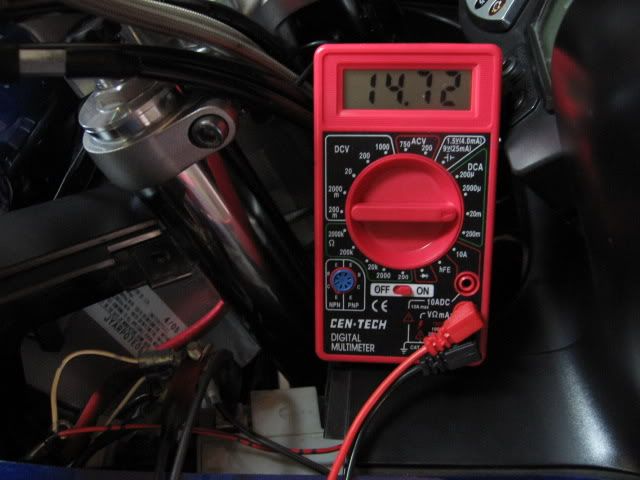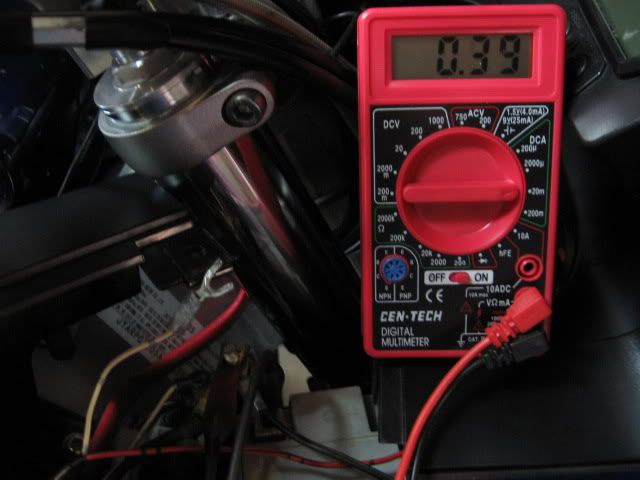Dangerous Dave
The older I get, the faster I was...
The ***** about having a bunch of vehicles is that each spends too much time sitting. After all, I can only travel so much. Thank goodness for Battery Tenders. I have pigtails for a battery tender on all my 'toys', including my truck, and a Tender plugged in on each side of the garage to keep all the batteries happy. But the FJR battery, more than any other, just won't stay charged on its own for any length of time, in spite of being replaced last year. Had the same problem with the old battery as well. Now I realize the correct thing to do would be to put an ammeter in series and see what the actual parasitic draw is. No good excuse really for not doing it, what with the feej battery being so easily accessible and all, especially with powerlet plugs and Datel voltmeters on the dash.  Part of me says there's no reason for this bike to have excessive parasitic draw, since nothing is energized with key off (I don't think) beyond clock memory and such. It's also interesting to note that the Datel reads about a half a volt low according to my Fluke 88, but that could be due to voltage drop across crusty connections. Not really sure how it's wired in, since it was installed by the previous owner (someone you all know and love), but it does make me at least a bit curious.
Part of me says there's no reason for this bike to have excessive parasitic draw, since nothing is energized with key off (I don't think) beyond clock memory and such. It's also interesting to note that the Datel reads about a half a volt low according to my Fluke 88, but that could be due to voltage drop across crusty connections. Not really sure how it's wired in, since it was installed by the previous owner (someone you all know and love), but it does make me at least a bit curious.
All my other bikes can sit for weeks with no tender hooked up, then plug it in...light is red for 10 or 20 seconds and then goes to green. But not the feej...it needs plenty-O-Battery-Tendin'. Of course none of the others are as farkled as the feej.
So...anybody else have a similar issue??
All my other bikes can sit for weeks with no tender hooked up, then plug it in...light is red for 10 or 20 seconds and then goes to green. But not the feej...it needs plenty-O-Battery-Tendin'. Of course none of the others are as farkled as the feej.
So...anybody else have a similar issue??

































































